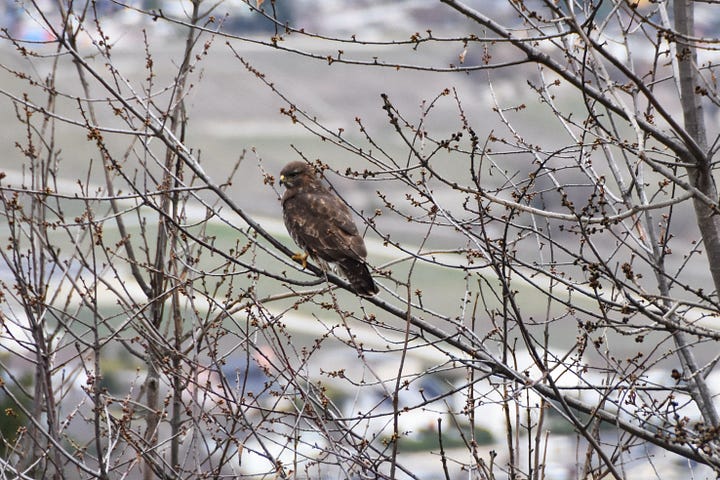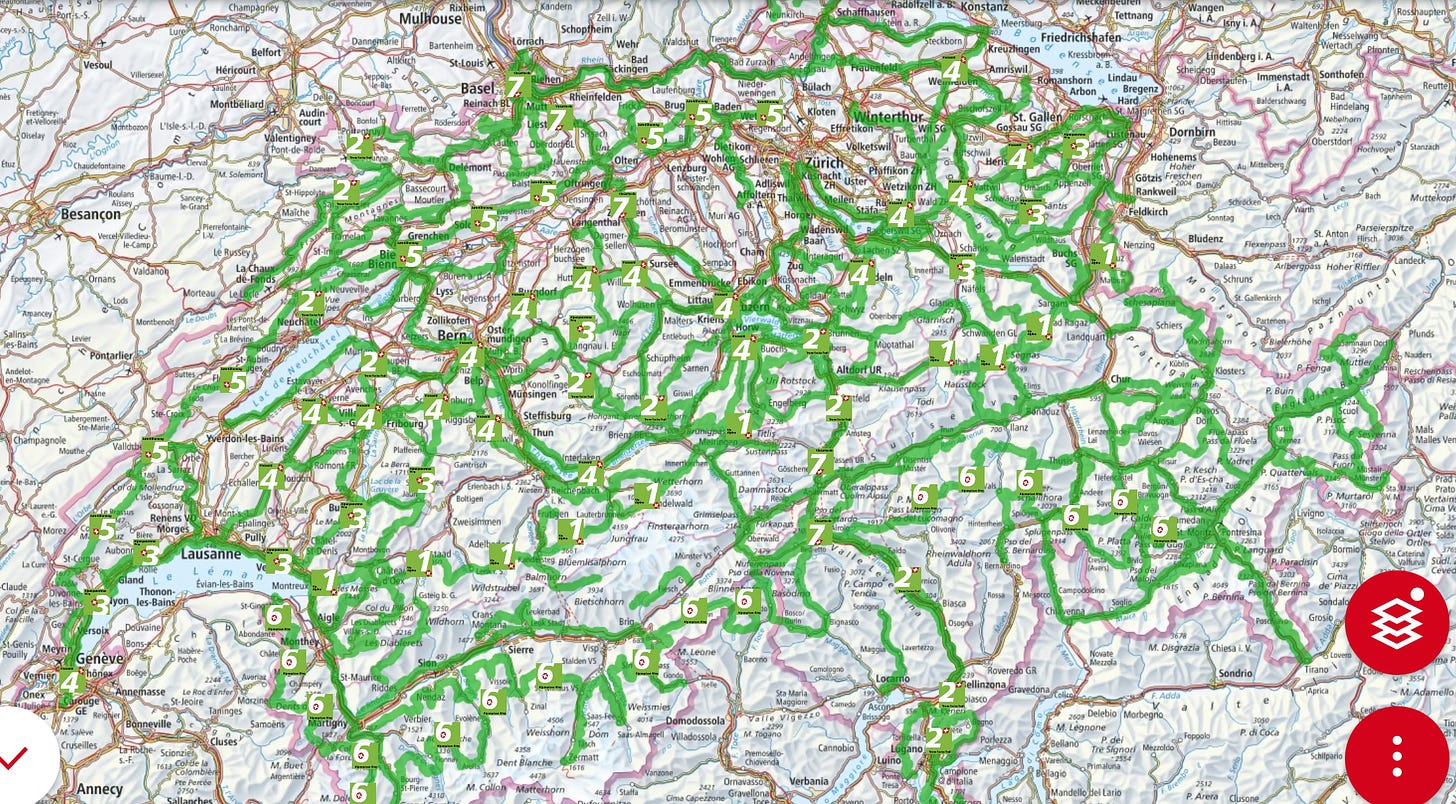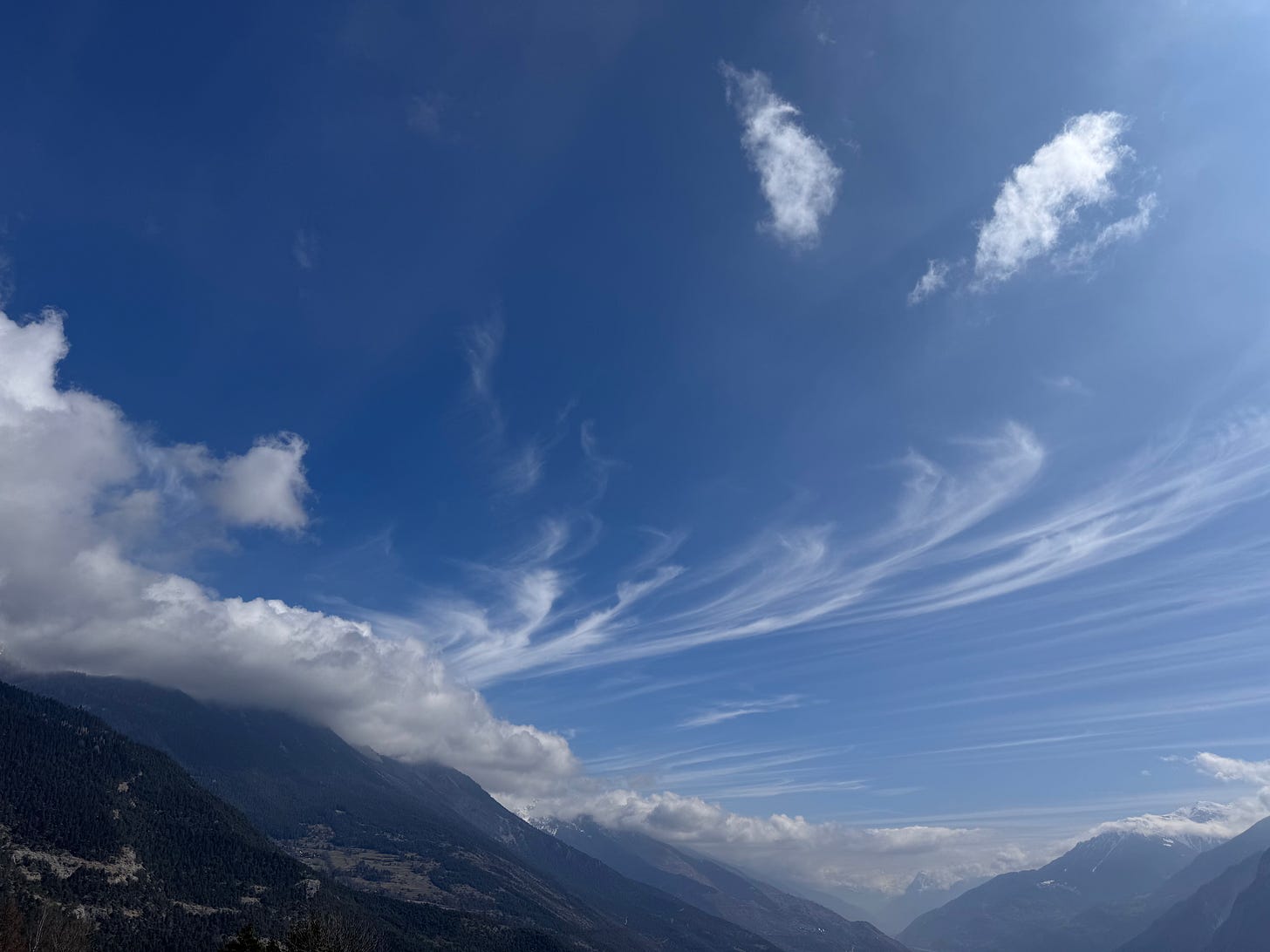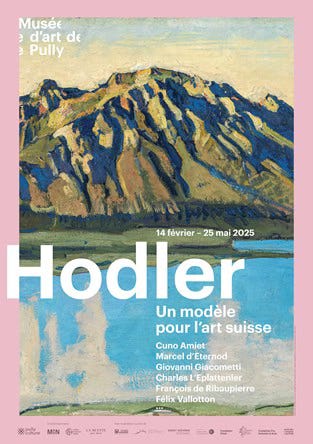Chenin, fish, poems, snakes, toothy
From bad fish/good fish to goodness in memorising to truly awful false teeth
2025 Swiss Mobility hiking routes
Last weekend’s unexpected metre of snow gave me time to reflect on my hiking plans for the rest of 2025. I’ll still be writing about one hike, one winery, one wine as an extension of my 2022 book Wine Hiking Switzerland. But I’ve been inspired to take a new approach. Normally, I plan my hike, record it and I share it.
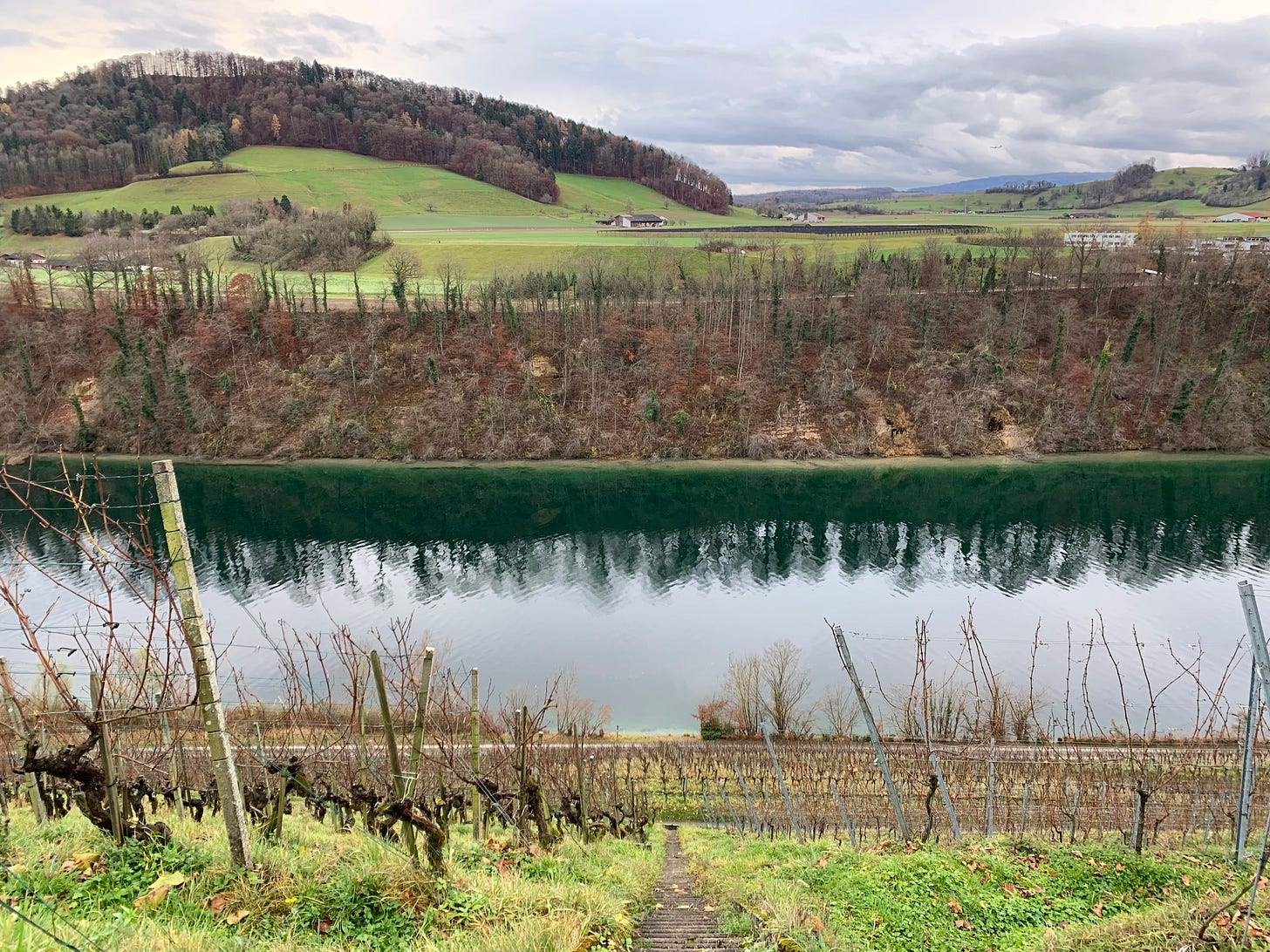
I was perusing the new summer hikes for 2025 published by Switzerland Mobility (SM), ranging from 7 to 38 km and from easy to difficult. I use their SM Plus app to record my hikes and I’ve always been impressed by the quality of their work. I realize now how few of these beautiful well-planned hikes I’ve done, so I’m going to concentrate on covering as many as possible before the end of 2025—but only those that have a good winery nearby.
Ordnance and snakes alert
Hikers, take a guess, are you more likely to get a snake bite in the Alps or trip over unexploded ordnance? Keep an eye out for both: the army “neutralised” 237 munitions in 2024, often in hiking areas, following tips from the public. As for snakes, there are two venomous snakes in Switzerland, so learn to recognise them and what to do if you’re bitten. Over 22 years, 243 snake bites due to native venomous snakes were reported in Switzerland. The Swiss toxinfo office points out that “humans are not tempting prey for snakes.” Whew.
Chenin wines: African kissin’ kin
Say Chenin Blanc to me and I have flashbacks to wonderful times learning about South Africa’s Chenin in the hills around Elgin and the Paarl and Franschoek wine regions, often sampling a glass of Chenin. So it was a surprise to me to find a bottle of French Chenin from just over the border in Haute Savoie, France, at Cave SA in Gland, Vaud, until I remembered some stellar late harvest Vouvrays—dessert wines. I also found a couple more Chenins in my cellar, a surprising one from Valais and a Loire classic.

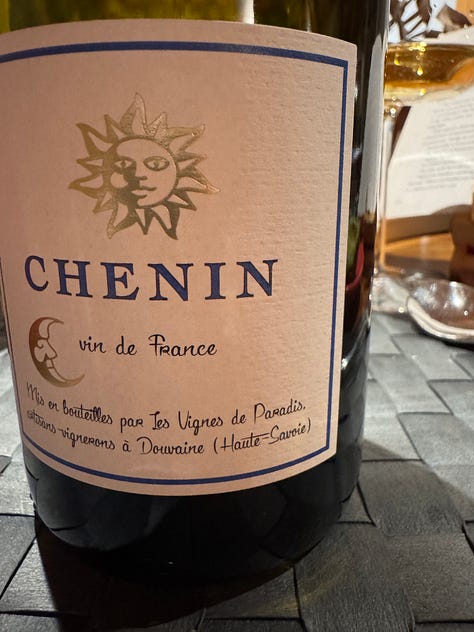
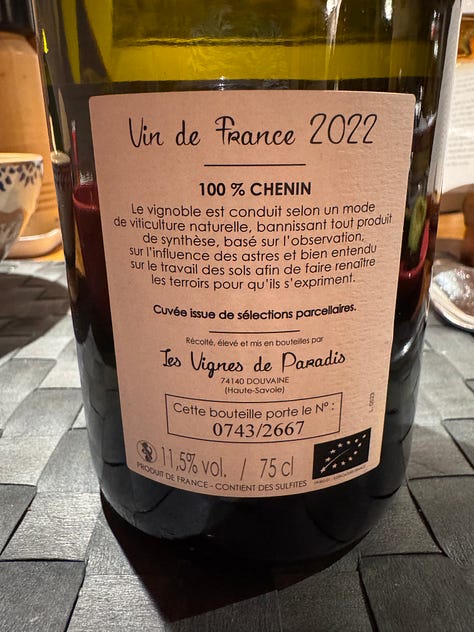
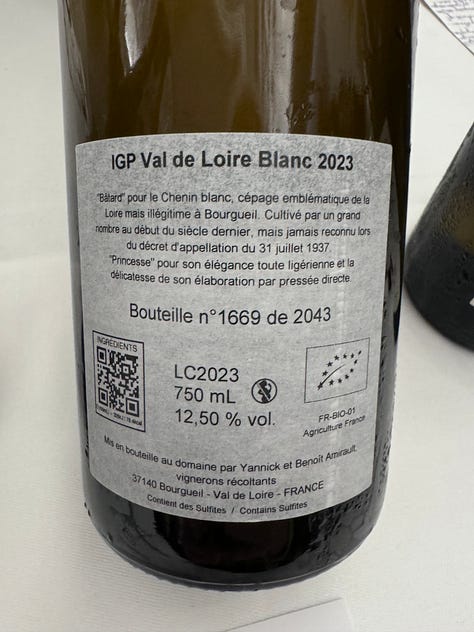
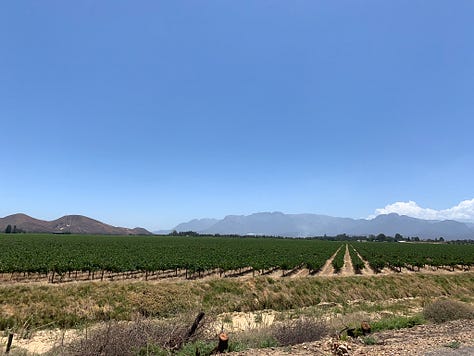
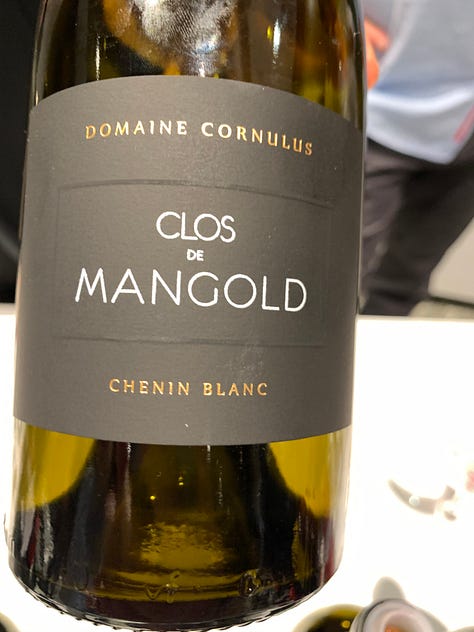
The Haute-Savoie version. In short: I liked it very much. Great acidity is the grape’s hallmark, but it can be much more, and this one, a wine from young vines, has a nose that is both fresh and lightly fruity (Cave SA say minty, but I didn’t find that) and a mouth that is very straight and clean and dry yet crunchy. It’s not particularly complex, but despite that it is an interesting wine, well above the “just pleasant” mark. I tried it with two homemade soups, an odd meal that allowed me to test it with different textures and flavours. Great with avocado, harissa olive oil and lime juice, black pepper. Great with leek and potato soup made with Thai coconut cream, topped with chives. And especially good with the seafood and algae/bone broth soup (homemade, bone dense) with fresh tarragon shoots from my garden. Versatile!
Why we should memorise
Garth Green is a writer whose latest book, Small Rain, just won the prestigious 2025 Pen/Faulkner award for fiction. He lives in Iowa, near where I grew up, so that’s two points in his favour. He recently wrote about the value of memorising poems, for writers but really, for everyone.
He wasn’t taught to do this as a child, so he offers tips for learning the skill as an adult. There’s a popular rationale that memorising is like cerebral pushups and will help keep aging at bay, but I think his arguments are more convincing. Here’s one:
Reading a poem, memorizing a poem, reciting (silently or aloud) a poem you’ve memorized: all of these give me the feeling of my consciousness, my concentration, being gathered, knitted up; an expansion of the self but also a drawing of the self to a point. (These apparently contradictory things do in fact go together.) It’s the exact opposite of the experience of social media, which scatters consciousness and so diminishes it, leaving one glassy-eyed, zombified.
Food, how we love it
Everyone seems to be writing about food all of a sudden. Days of discomfort call for comfort food?
Asparagus: I’ll jump in with a reminder that this is asparagus season. One of the biggest regions for this in Switzerland is Valais, especially around Saillon. The vegetable is so popular that some places, for example Duval near Sierre, tell you to reserve. I discovered, after buying too many of the earliest white ones this year, that they freeze well. Be sure to peel the lower part, then parboil for 4-5 minutes, allow to cool and dry thoroughly. Place gently in a freezer bag. Use them frozen, as they go soggy if thawed. Place on a baking sheet, drizzle with olive oil, add salt and pepper, bake for 10-12 minutes at 200C or 15 minutes at 180C. The classic wine pairing is a slightly sweet Johannisberg (Riesling Sylvaner) but I prefer a dry and slightly salty Petite Arvine.
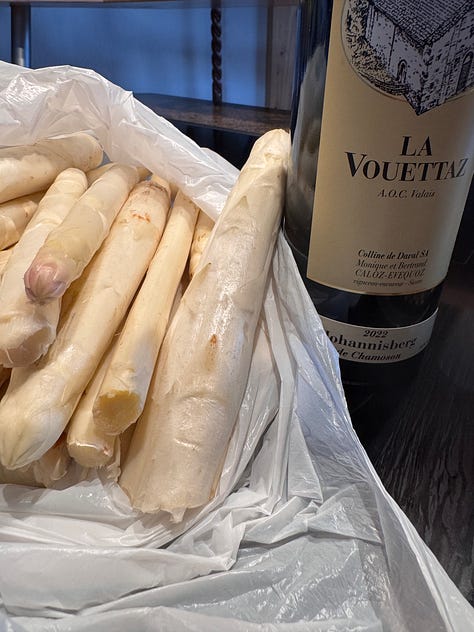
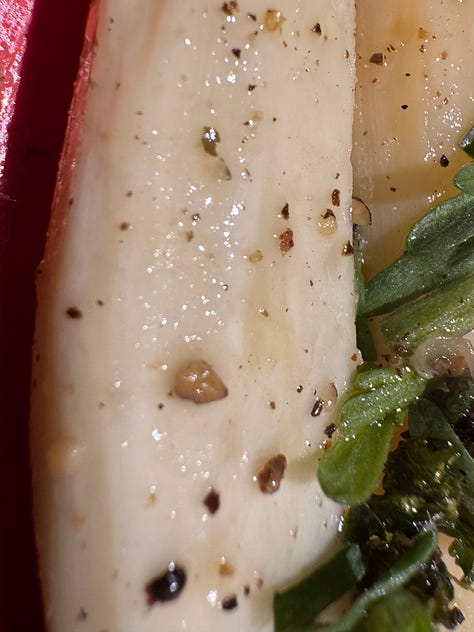
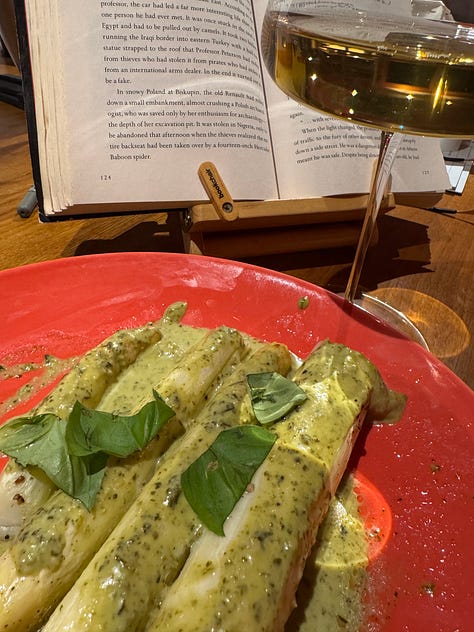
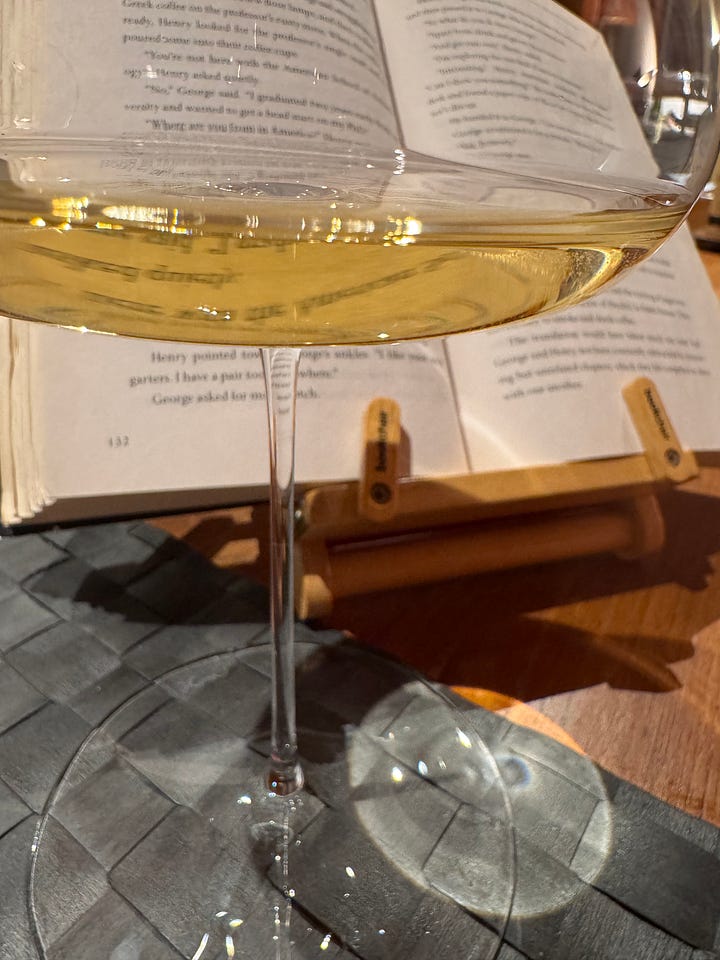
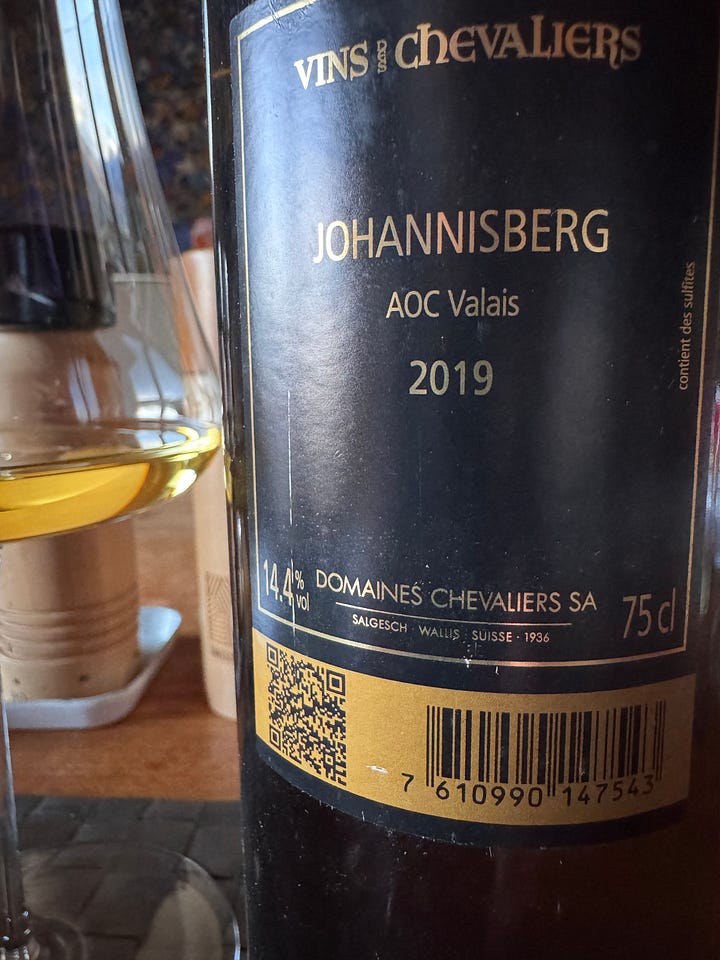
Good fish/bad fish: WWF has some advice about eating good fish in a helpful new little guide. We’re not talking about the taste or nutrition value, but the impact on world reserves of fish. In Switzerland we import 97% of the fish we eat. “To feed the 29’000 tons of farmed seafood we import annually into Switzerland, an estimated 37’800 to 95’700 tons of wild fish were caught for the production of fishmeal and oil.” Salmon is one of our favourites—we import nine times more than 30 years ago.
Diet of the future: There’s a lot of talk about changing our eating habits, starting with reducing the amount of meat and considering the diet of the future. Disgust is possibly an under-studied aspect. Consider the cockroach, and how it could help save the planet. “Disgust is a gut reaction, but it’s also highly sensitive to our beliefs about the food in question. Recall the sterilised cockroach: even when we know a food is clean and safe to eat, it can still elicit a strong disgust reaction.” Definitely food for thought.
Out and about
Wine tastings—Vino Veritas is a collective of Swiss wineries with a focus on the “living” aspects of wine (so expect a lot of natural, biodynamic, etc.). Their fourth itinerant event of the year is 5 May in Zurich: register here. Swiss regional winery open days are starting soon, the big annual wine tastings (details). German-speaking areas: 1, 3, 4 May. Neuchatel: 9-10 May. Ticino: 17-18 May. Geneva: 24 May. Valais: 29-31 May. Vaud: 7-8 June. Small breweries (not exactly wine) beer hiking trail day in Loc, near Sierre, Valais 3 May—very fun outing.
Art — The much-touted Northern Lights paintings show at the Beyeler runs until 28 May. Swiss artist Hodler is featured at the Pully art museum in Vaud: ends 25 May.
Here and there
If you missed it, here are explanations to help you understand how Substack works for readers.
Switzerland-USA trade, good to know, should you be debating tariffs. A snippet: “Although Switzerland is less than 1% the size of the United States, Switzerland is the 7th most important foreign investor, with cumulative investments of $307 billion.”
Food again. The world’s first barbecue museum in a city worth traveling to, to eat it.
Not comforting: lions and gladiators. Not for those with toothache: George Washington’s hippo and walrus teeth; a book you can sink your teeth into.
Ellen’s World image
